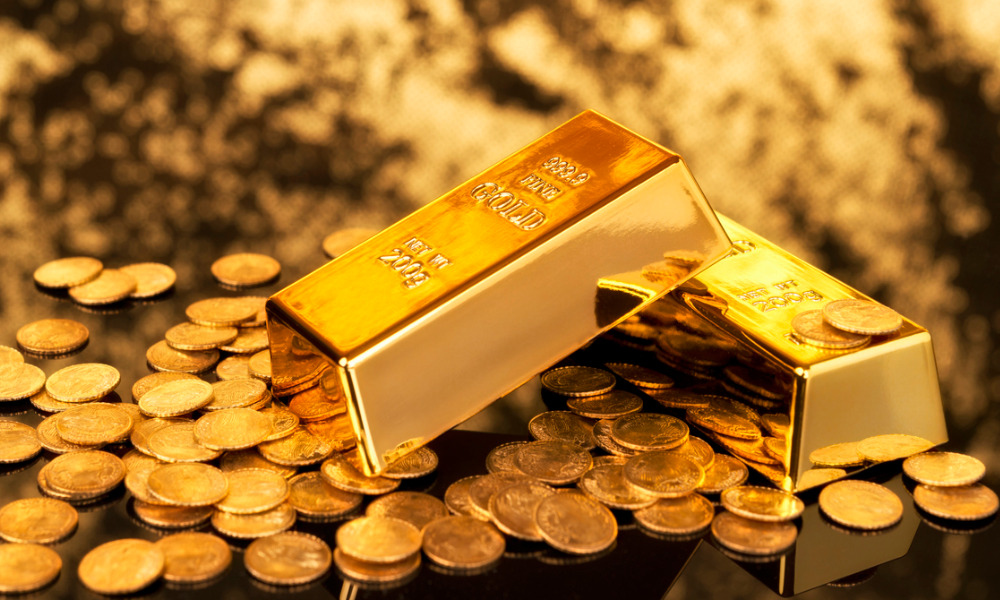A supposed haven in times of stock market turmoil, gold is down by almost 8% this year

Gold has a history of providing safety in portfolios, but the precious metal has failed to live up to that reputation so far this year.
With a loss of 14% so far, the most active gold contract is projected to decline for six months in a row, according to the Wall Street Journal.
For an asset that is supposed to be a haven, that represents a sizable decline, and it also represents the longest losing streak since September 2018, when prices dropped 9.9% over a period of six months.
Investors prize gold for its dependable stability during turbulent times. Soon after Russia's invasion of Ukraine overturned stock and commodity markets, prices increased to levels that were close to all-time highs.
Read more: Why demand for gold is rising, and expected to continue amid volatility
Gold reached a 2022 high of US$2,069.40 per troy ounce in early March. But it is currently down 7.9% so far this year, on track for its worst yearly performance since 2015.
Compared to early March, stock prices are now lower. As the war dragged on, worries about inflation only grew.
However, since June, the haven metal has been trapped in a trading range between US$1,650 and US$1,800. On Friday, gold made some progress, rising 0.4% to $1,683.50.
Still, gold prices are off almost 20% from the all-time highs reached in August 2020 when Covid-fueled uncertainty was rampant.
“Gold’s not as attractive as it was in 2020,” Ruth Crowell, chief executive at the London Bullion Market Association told the Journal. Last week, the front-month gold futures contract shed US$44.50 a troy ounce, or 2.6%, to US$1,671.70.
Another illustration of how the Federal Reserve's aggressive rate-raising campaign is causing financial markets to tremble is the volatility.
The report from last week indicating that inflation is still stubbornly high has all but solidified expectations that interest rates will continue to rise. When the Fed meets, another significant rate increase is anticipated.
Read more: U.S. inflation report was 'worst-case scenario', says economist
“The outlook for gold remains vulnerable until the Fed stops hiking rates,” Tai Wong, a senior trader at Heraeus Precious Metals in New York, told the Journal.
In today's market, investors can expect to receive relatively high returns on government bonds because Treasury yields typically move in lockstep with market expectations for the Fed's benchmark rate.
The two-year Treasury yield surpassed its 2007 high last week. Due to this and the fact that Treasury bonds, unlike gold, provide regular payouts, many risk-averse investors have switched from being gold bugs to bond buyers.
According to analysts at JPMorgan Chase & Co., gold prices will continue to decline and will average US$1,650 per troy ounce in the fourth quarter.
That demonstrates the increasing perception that the Fed is powerless to relent on rate hikes.
Richard Fisher, former president of the Federal Reserve Bank of Dallas, said, “It’s not a light switch that goes on and off. It’s a dimmer.”
The situation is made more difficult by the U.S. dollar, another haven. The American dollar has been in high demand from investors seeking a safe investment, pushing it close to 20-year highs. Due to the increase in price, foreign buyers' demand for gold has decreased.
Markets for gold are experiencing pain. The largest exchange-traded fund in the world that is backed by physical gold, SPDR Gold Shares, is down more than 2% so far in September.
Many investors anticipate that the Fed will slow the rate increases it makes in 2019; this could result in lower yields and a weaker dollar, which would increase gold prices. By the end of next year, the JPMorgan analysts predict that gold will increase to around US$1,820 per troy ounce.



